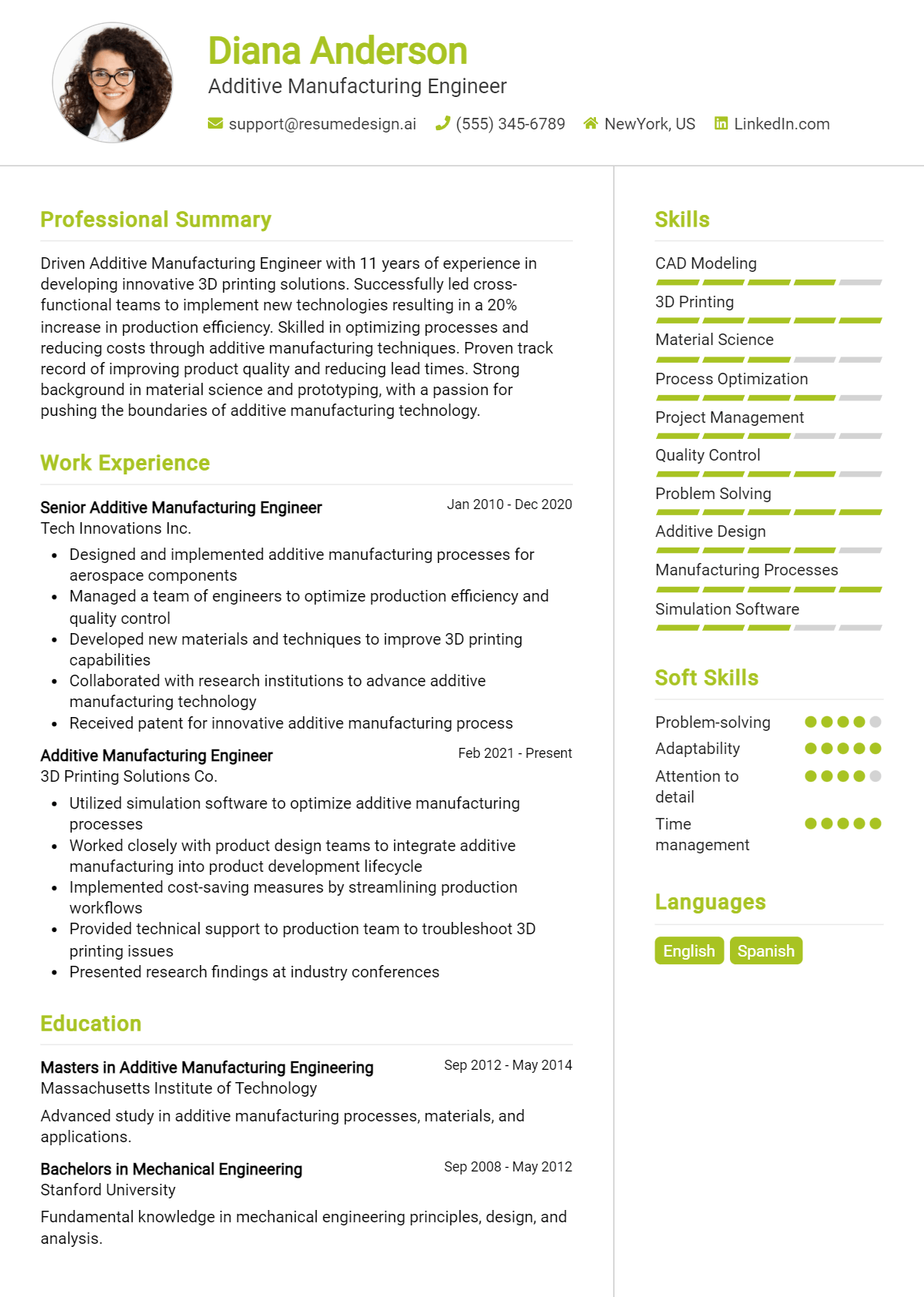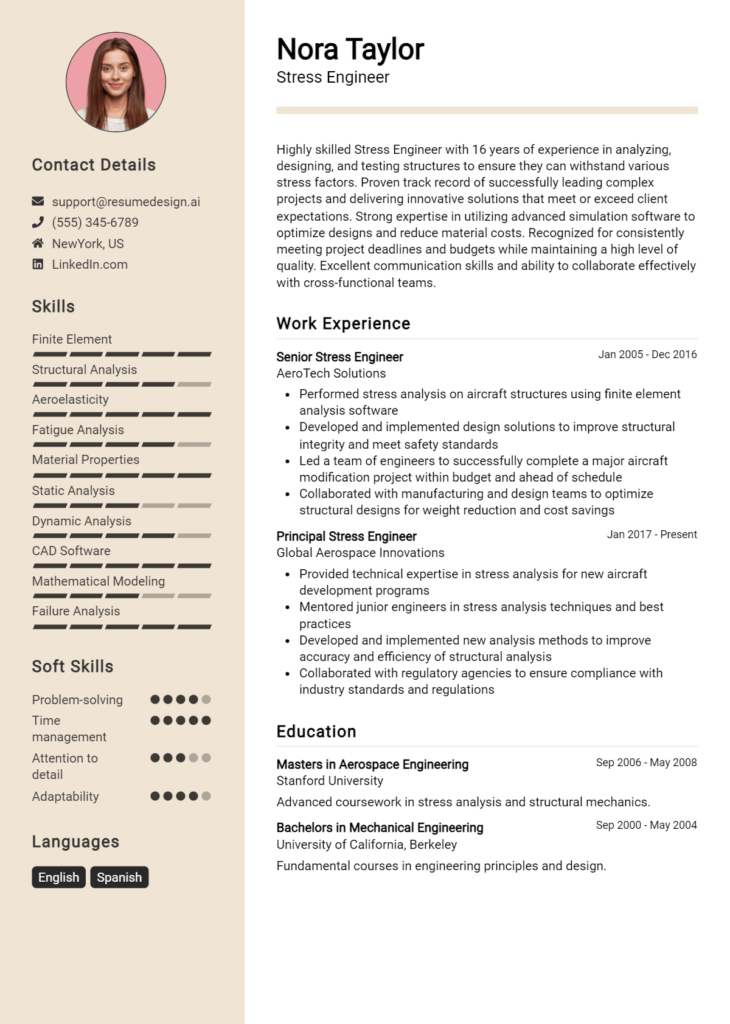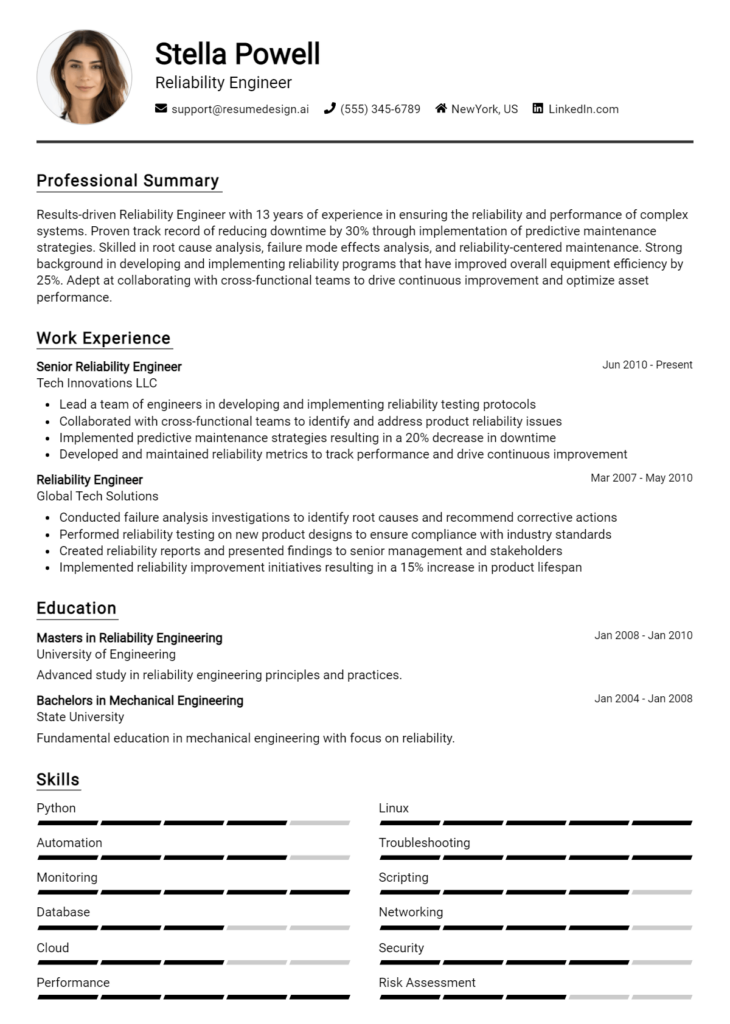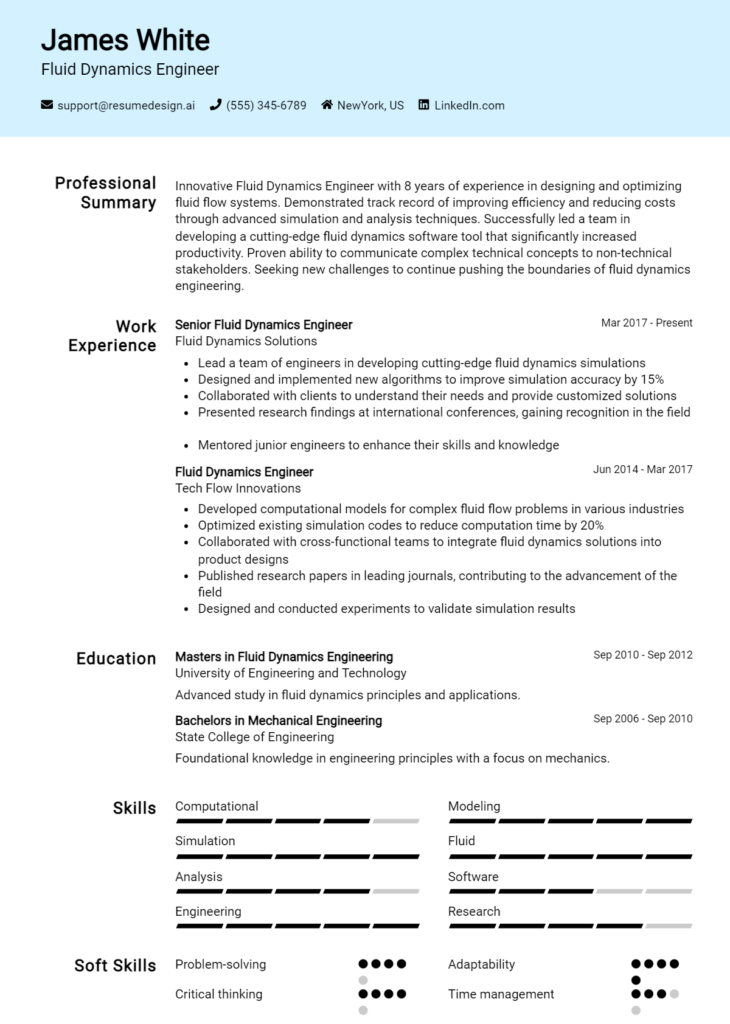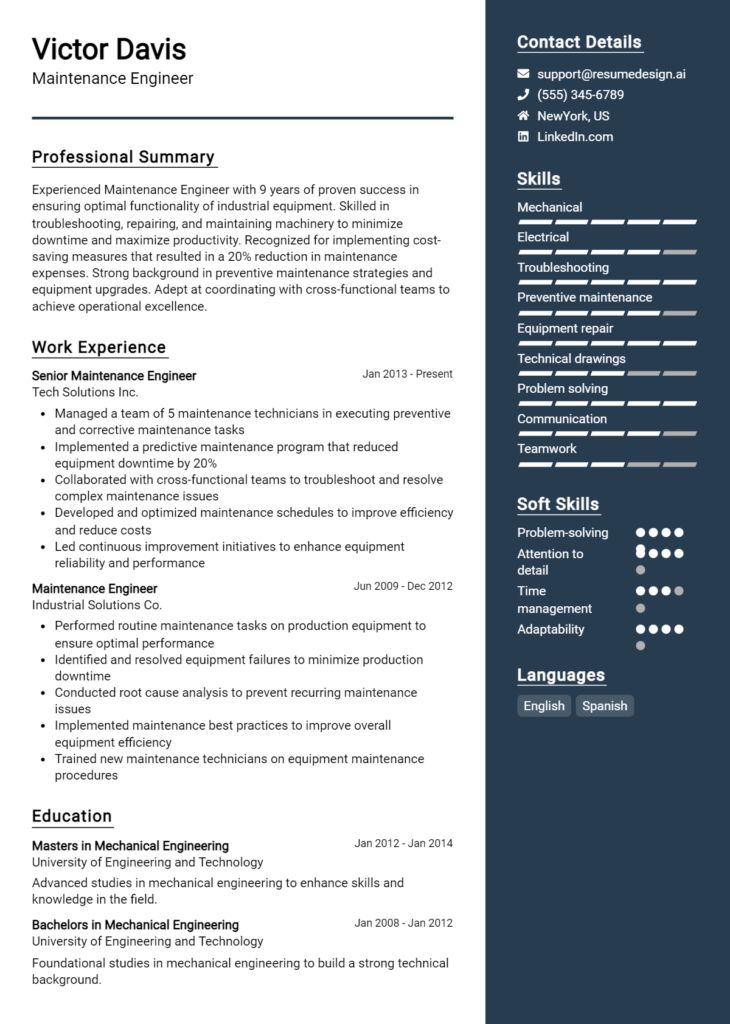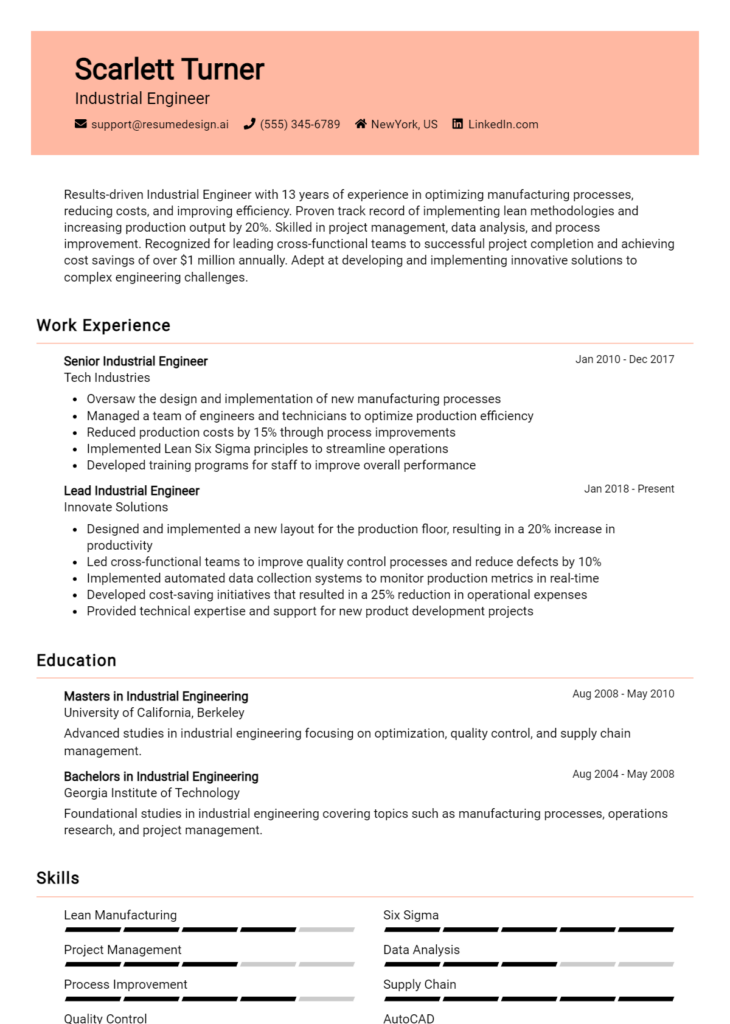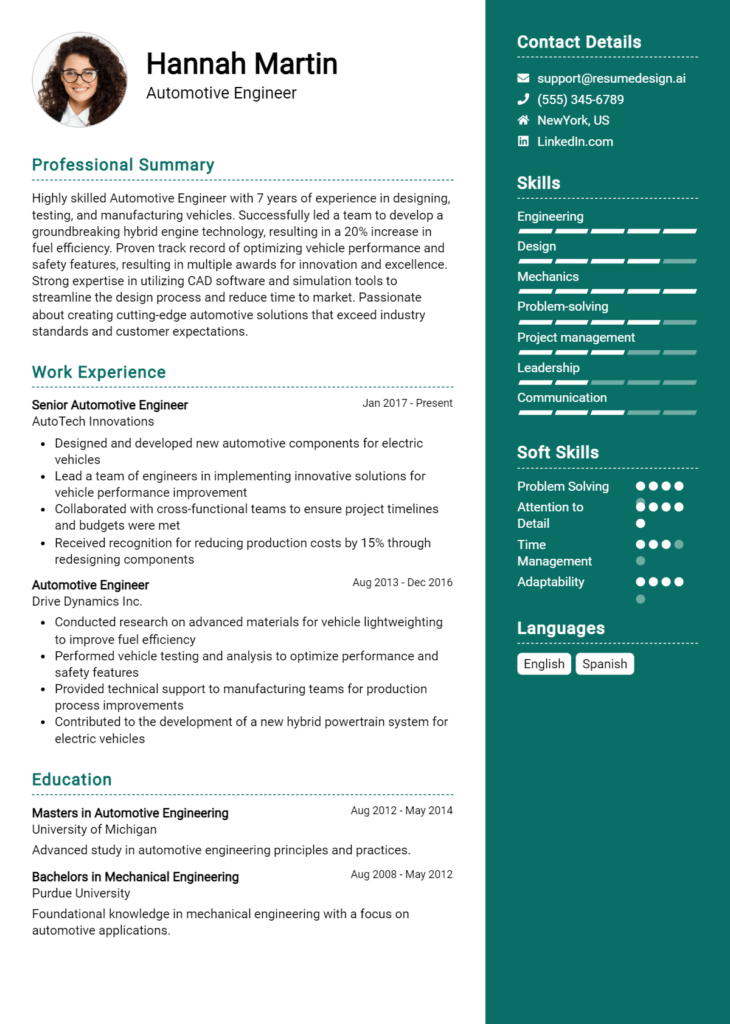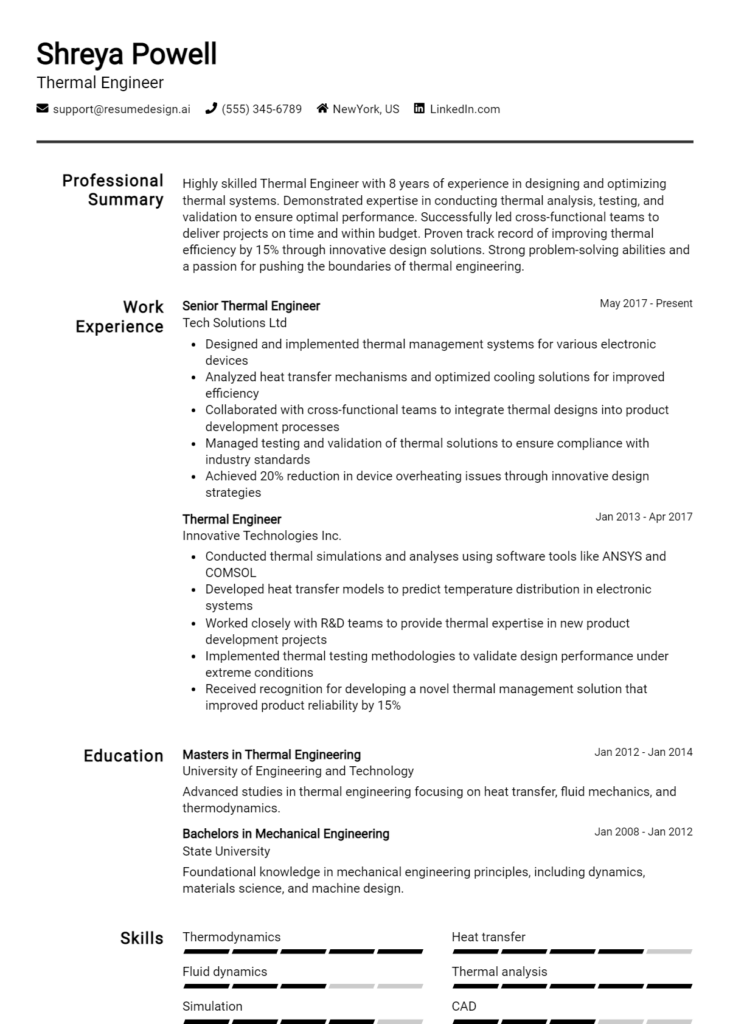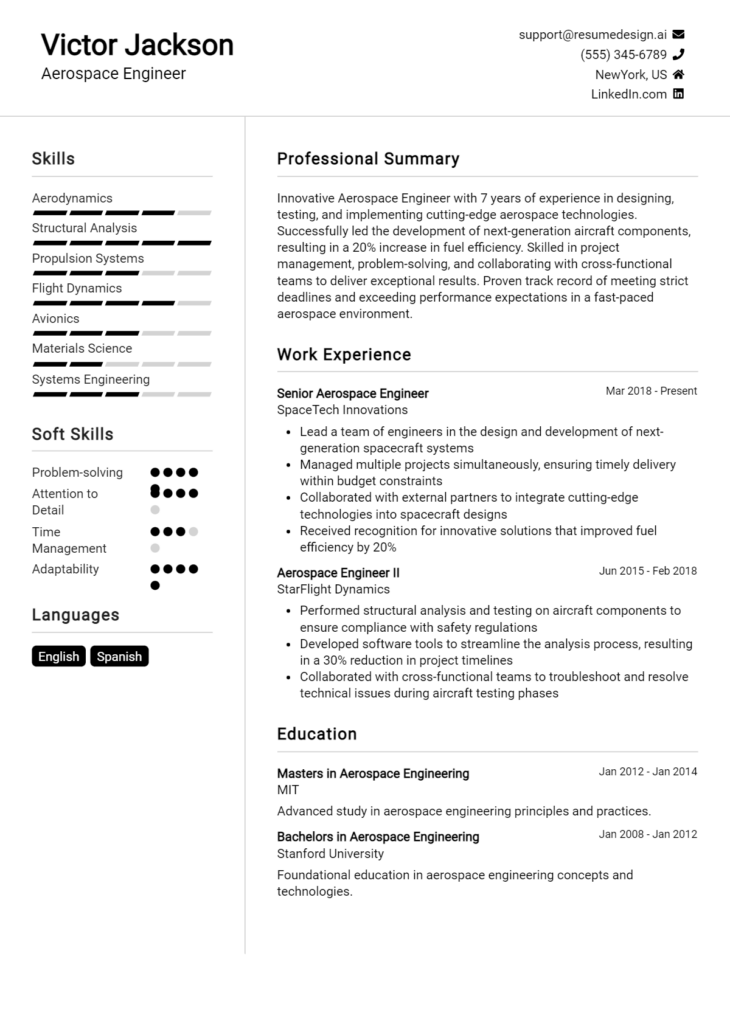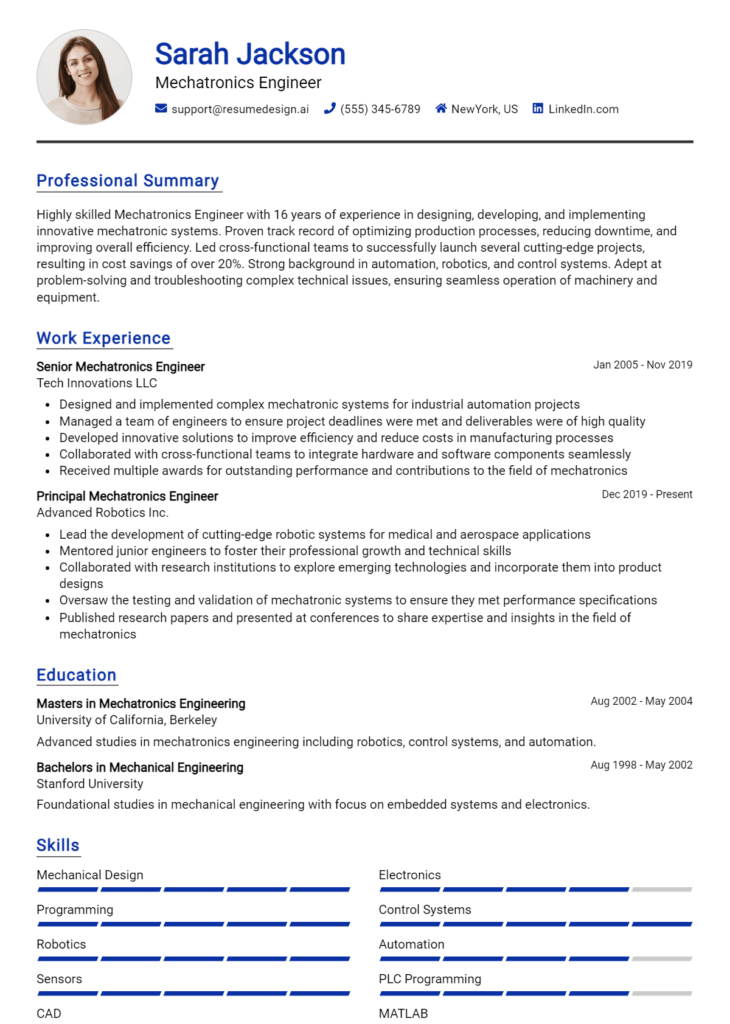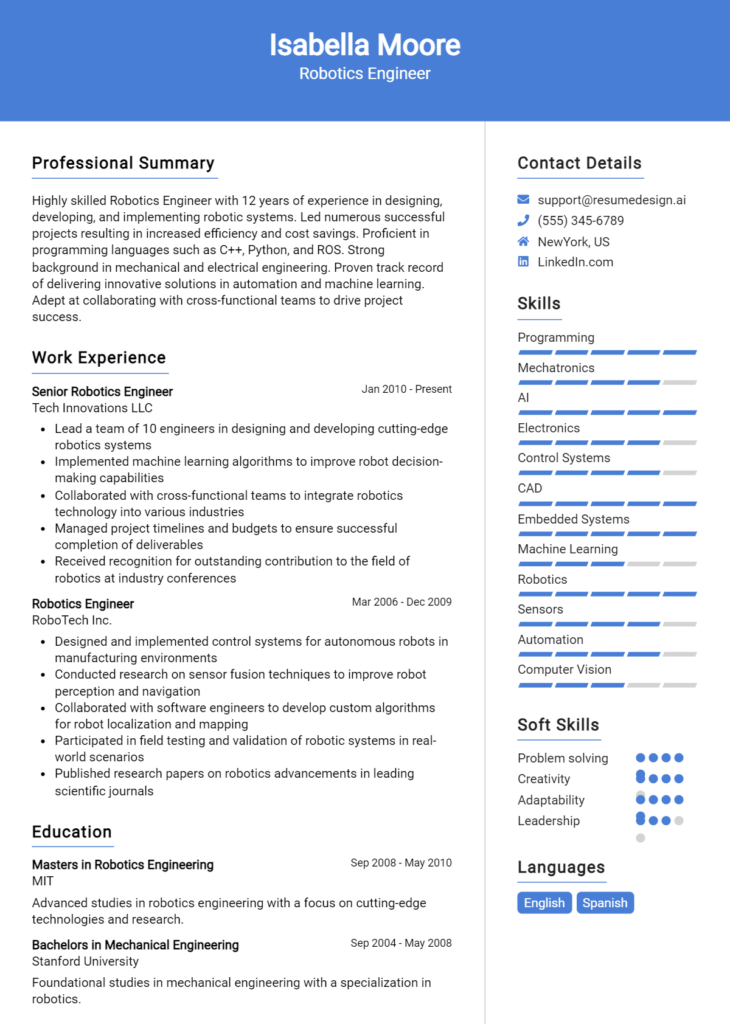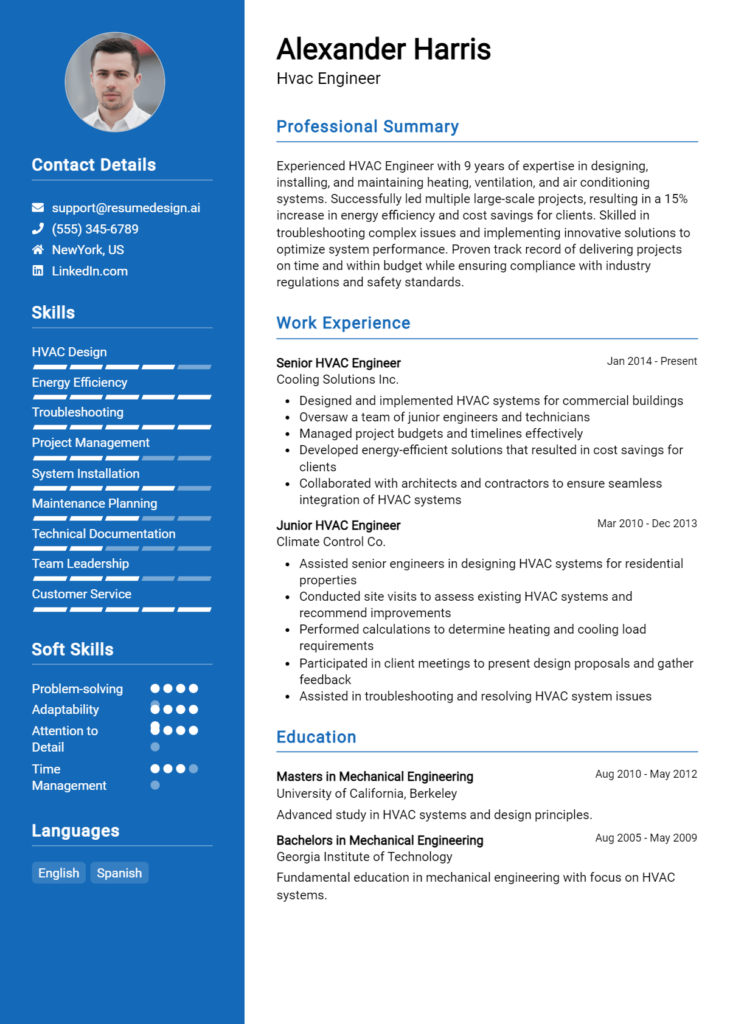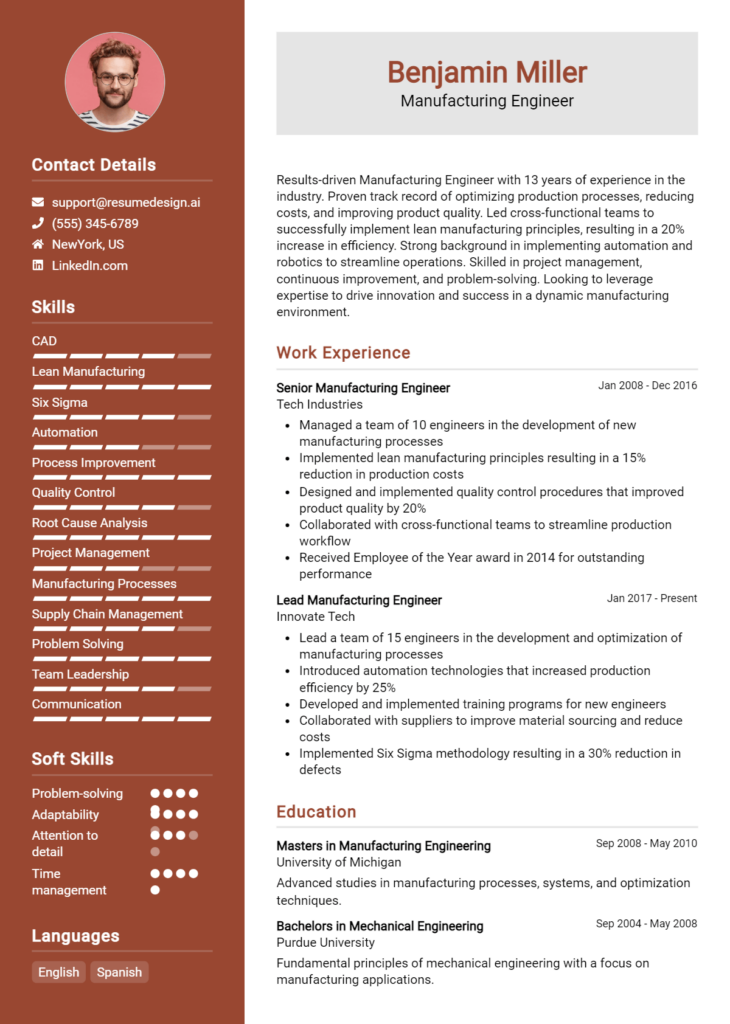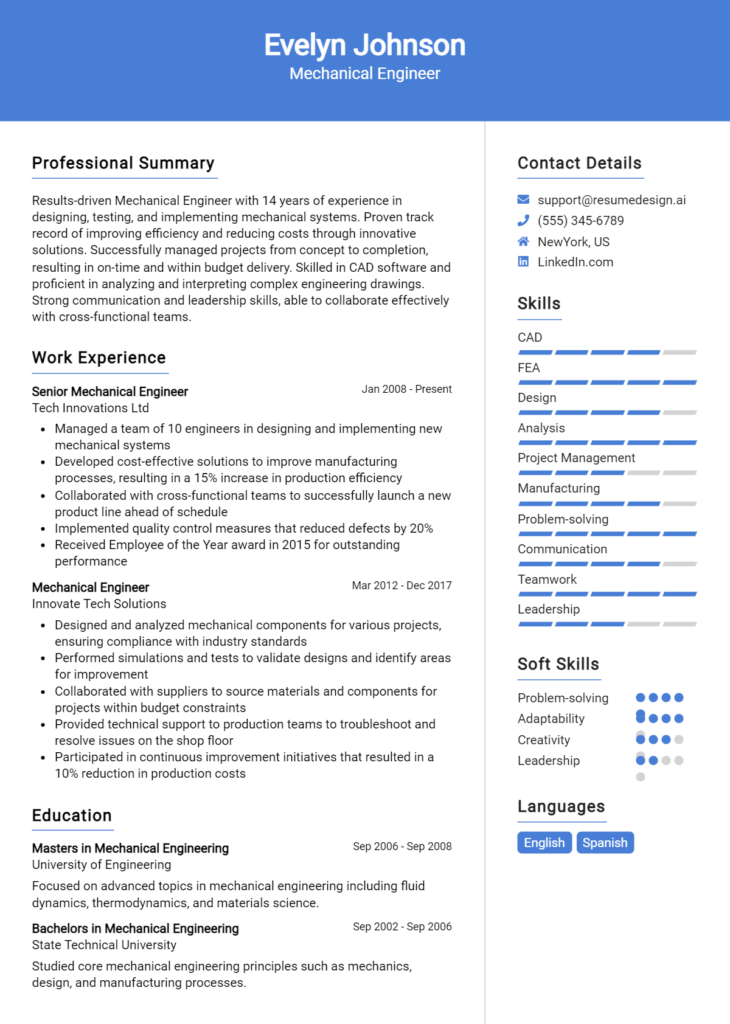Additive Manufacturing Engineer Core Responsibilities
An Additive Manufacturing Engineer plays a crucial role in bridging various departments, including design, production, and quality assurance. Key responsibilities include developing and optimizing additive manufacturing processes, collaborating with cross-functional teams to integrate new technologies, and troubleshooting production issues. Essential skills encompass technical expertise in 3D printing techniques, operational efficiency, and strong problem-solving abilities. These competencies are vital for achieving organizational goals, and a well-structured resume can effectively showcase these qualifications, enhancing career opportunities.
Common Responsibilities Listed on Additive Manufacturing Engineer Resume
- Design and develop additive manufacturing processes and workflows.
- Collaborate with design teams to ensure manufacturability of components.
- Conduct material selection and testing for optimal performance.
- Optimize existing processes for efficiency and cost-effectiveness.
- Troubleshoot technical issues during production runs.
- Implement and maintain quality control procedures.
- Train and mentor junior engineers and technicians.
- Stay updated on industry trends and advancements in technology.
- Prepare and present technical reports to stakeholders.
- Ensure compliance with safety and regulatory standards.
- Manage project timelines and budgets effectively.
High-Level Resume Tips for Additive Manufacturing Engineer Professionals
A well-crafted resume is crucial for Additive Manufacturing Engineer professionals, as it often serves as the first impression a candidate makes on potential employers. In a competitive job market, your resume must not only showcase your technical skills and engineering expertise but also reflect your unique achievements and contributions to previous projects. This guide aims to provide practical and actionable resume tips specifically tailored for Additive Manufacturing Engineer professionals, ensuring that your qualifications stand out and resonate with hiring managers.
Top Resume Tips for Additive Manufacturing Engineer Professionals
- Tailor your resume to each job description by incorporating keywords and phrases that match the requirements outlined in the role.
- Highlight relevant experience in additive manufacturing, such as specific projects, technologies used, and your role in the development process.
- Quantify your achievements by using metrics or data to demonstrate the impact of your work, such as percentage improvements in production efficiency or cost savings.
- Showcase industry-specific skills, including familiarity with various additive manufacturing technologies, software tools like CAD and CAM, and understanding of materials science.
- Include certifications and training relevant to additive manufacturing, such as courses in 3D printing techniques or materials engineering.
- Emphasize collaboration and teamwork experiences, as additive manufacturing projects often require effective communication and cooperation with cross-functional teams.
- Utilize a clean and professional layout, ensuring that your resume is visually appealing and easy to read, with clear headings and organized sections.
- Incorporate a professional summary at the top of your resume that succinctly captures your experience, skills, and career objectives in additive manufacturing.
- Proofread your resume for spelling and grammatical errors, as attention to detail is critical in engineering roles.
Implementing these tips can significantly increase your chances of landing a job in the Additive Manufacturing Engineer field. A strong resume that effectively highlights your skills, experiences, and achievements will not only catch the attention of hiring managers but also position you as a well-qualified candidate in this rapidly evolving industry.
Why Resume Headlines & Titles are Important for Additive Manufacturing Engineer
In the competitive field of additive manufacturing, a well-crafted resume headline or title is essential for an Additive Manufacturing Engineer. This succinct phrase serves as the first impression for hiring managers, allowing them to quickly gauge a candidate's qualifications and relevance to the position. A strong headline not only grabs attention but also encapsulates the candidate's key skills and experiences in a manner that resonates with the specific job they are applying for. By being concise, relevant, and directly tied to the role, a compelling resume headline can significantly enhance a candidate's visibility and appeal in a crowded job market.
Best Practices for Crafting Resume Headlines for Additive Manufacturing Engineer
- Keep it concise; aim for one impactful sentence.
- Use industry-specific keywords to enhance relevance.
- Highlight your strongest skills or accomplishments.
- Make it role-specific to align with the job description.
- Avoid jargon and overly complex language.
- Incorporate measurable achievements when possible.
- Showcase your unique value proposition as an engineer.
- Ensure it reflects your professional brand and expertise.
Example Resume Headlines for Additive Manufacturing Engineer
Strong Resume Headlines
Innovative Additive Manufacturing Engineer Specializing in Metal 3D Printing Technologies
Results-Driven Additive Manufacturing Expert with 5+ Years of Experience in Process Optimization
Certified Additive Manufacturing Engineer Focused on Sustainable Design and Production Techniques
Weak Resume Headlines
Engineer Looking for a Job in Manufacturing
Experienced Professional Seeking Opportunities
The strong headlines are effective because they are specific, highlighting the candidate's expertise in additive manufacturing and their unique skills, which directly align with potential employer needs. In contrast, the weak headlines fail to impress as they lack specificity and do not convey any particular value or unique selling point, making them forgettable in the eyes of hiring managers.
Writing an Exceptional Additive Manufacturing Engineer Resume Summary
A well-crafted resume summary is essential for an Additive Manufacturing Engineer, as it serves as the first impression for hiring managers who often sift through numerous applications. A strong summary succinctly highlights key skills, relevant experience, and notable accomplishments, allowing candidates to stand out in a competitive field. By presenting this information in a concise and impactful manner, candidates can effectively capture the attention of employers and demonstrate their fit for the role. Tailoring the summary to align with the specific job description further enhances its relevance, making a compelling case for why the candidate is the ideal choice for the position.
Best Practices for Writing a Additive Manufacturing Engineer Resume Summary
- Quantify Achievements: Use specific numbers and metrics to demonstrate your impact, such as project success rates or cost savings.
- Focus on Skills: Highlight technical skills relevant to additive manufacturing, such as 3D modeling, material selection, and process optimization.
- Tailor to Job Description: Customize your summary to reflect the specific qualifications and requirements listed in the job posting.
- Use Action Verbs: Start sentences with strong action verbs to convey confidence and proactivity in your work.
- Showcase Relevant Experience: Briefly outline your experience in additive manufacturing, including specific technologies and methodologies used.
- Maintain Conciseness: Keep your summary to 3-5 sentences to ensure it is easily digestible and impactful.
- Highlight Problem-Solving Abilities: Mention your capability to tackle challenges and innovate solutions in additive manufacturing projects.
- Include Soft Skills: Don’t forget to incorporate relevant soft skills, such as teamwork, communication, and project management, that complement your technical expertise.
Example Additive Manufacturing Engineer Resume Summaries
Strong Resume Summaries
Results-oriented Additive Manufacturing Engineer with over 5 years of experience in 3D printing and rapid prototyping. Successfully reduced production costs by 30% through process optimization and material innovation on multiple projects.
Detail-driven Additive Manufacturing Engineer skilled in operating advanced 3D printers and developing custom materials. Led a cross-functional team that improved product turnaround time by 25% while enhancing quality standards.
Innovative Additive Manufacturing Engineer with expertise in metal and polymer additive processes. Achieved a 40% increase in production efficiency by implementing automated workflows and continuous improvement strategies in a high-volume facility.
Weak Resume Summaries
Additive Manufacturing Engineer with experience in various manufacturing processes. Looking for a new opportunity to use my skills.
Engineer who has worked in additive manufacturing. I am a hard worker and want to contribute to a team.
The examples above illustrate the differences between strong and weak resume summaries. Strong summaries are specific, quantifiable, and directly relate to the skills and experiences required for the Additive Manufacturing Engineer role. They provide clear evidence of achievements and demonstrate a proactive approach. In contrast, weak summaries are vague, lacking in detail and measurable outcomes, and fail to convey the candidate's true potential or relevance to the position.
Work Experience Section for Additive Manufacturing Engineer Resume
The work experience section of an Additive Manufacturing Engineer resume is essential as it serves as a key indicator of the candidate's technical skills, leadership abilities, and capacity to deliver high-quality products. This section not only highlights the specific tools and technologies utilized by the engineer but also illustrates their experience in managing teams and projects. By quantifying achievements and aligning work experience with industry standards, candidates can effectively demonstrate their value to potential employers, showcasing a clear track record of success in the field of additive manufacturing.
Best Practices for Additive Manufacturing Engineer Work Experience
- Utilize action verbs to start each bullet point, emphasizing your contributions.
- Quantify achievements with metrics such as percentage improvements or cost savings.
- Highlight specific technologies and software relevant to additive manufacturing.
- Include collaborative projects to showcase teamwork and leadership skills.
- Tailor your experiences to align with the job description and industry standards.
- Focus on problem-solving experiences that demonstrate innovation and creativity.
- Clearly outline the scope of projects to provide context for your contributions.
- Incorporate feedback or outcomes from stakeholders to validate your impact.
Example Work Experiences for Additive Manufacturing Engineer
Strong Experiences
- Led a cross-functional team to develop a new additive manufacturing process, resulting in a 30% reduction in production time and a 15% decrease in material waste.
- Implemented quality control measures that improved product consistency by 25%, leading to a 40% increase in customer satisfaction ratings.
- Collaborated with design engineers to optimize 3D printed components, achieving a 20% weight reduction without compromising structural integrity.
- Managed a project that successfully delivered a prototype using additive manufacturing techniques, which was later adopted for full-scale production, generating $500,000 in revenue.
Weak Experiences
- Worked on various projects related to additive manufacturing.
- Responsible for tasks in the production department.
- Assisted in the development of new techniques.
- Participated in meetings about project progress.
The examples classified as strong experiences demonstrate clear, quantifiable outcomes and showcase a candidate's technical leadership and collaborative efforts in the field of additive manufacturing. In contrast, the weak experiences lack specificity and measurable results, making them less impactful and failing to effectively illustrate the candidate's contributions or skills. A strong work experience section should paint a vivid picture of the candidate's competencies and achievements in the industry.
Education and Certifications Section for Additive Manufacturing Engineer Resume
The education and certifications section of an Additive Manufacturing Engineer resume is crucial for demonstrating a candidate's academic foundation and industry-specific expertise. This section not only highlights relevant degrees but also showcases certifications that validate the candidate's skills and knowledge in additive manufacturing technologies. By including relevant coursework and specialized training, candidates can illustrate their commitment to continuous learning and staying updated with industry advancements. Ultimately, this section enhances the candidate's credibility and alignment with the required qualifications for the job role, making it an essential component of the resume.
Best Practices for Additive Manufacturing Engineer Education and Certifications
- Include relevant degrees from accredited institutions, focusing on engineering or related fields.
- Highlight industry-recognized certifications, such as those from organizations like the American Society of Mechanical Engineers (ASME) or the Society of Manufacturing Engineers (SME).
- Detail specialized training in additive manufacturing processes, materials, and technologies.
- Incorporate relevant coursework that pertains directly to additive manufacturing and design principles.
- Present certifications in a clear format, indicating the issuing organization and date obtained.
- Prioritize advanced degrees and credentials that demonstrate higher expertise in the field.
- Keep the information concise but informative, avoiding unnecessary jargon or unrelated qualifications.
- Update this section regularly to reflect new certifications and educational achievements.
Example Education and Certifications for Additive Manufacturing Engineer
Strong Examples
- M.S. in Mechanical Engineering, with a focus on Additive Manufacturing, University of XYZ, 2022
- Certified Additive Manufacturing Technician (CAMT), SME, 2023
- Relevant Coursework: Advanced 3D Printing Technologies, Materials Science for Additive Manufacturing, Design for Additive Manufacturing
- B.S. in Industrial Engineering, University of ABC, 2020
Weak Examples
- B.A. in History, University of DEF, 2018
- Certification in Basic Computer Skills, 2019
- Diploma in Graphic Design, 2020
- Online Course in Social Media Marketing, 2021
The strong examples are considered relevant because they directly align with the qualifications necessary for an Additive Manufacturing Engineer, showcasing both advanced education and pertinent certifications. In contrast, the weak examples are deemed irrelevant as they do not pertain to the field of additive manufacturing, lacking industry-specific value and failing to demonstrate the candidate's capability in this specialized area.
Top Skills & Keywords for Additive Manufacturing Engineer Resume
As the field of additive manufacturing continues to grow and innovate, possessing the right skills is crucial for success as an Additive Manufacturing Engineer. A well-crafted resume that highlights both hard and soft skills can make a significant difference in standing out to potential employers. Skills not only demonstrate your technical proficiency in additive manufacturing processes and tools but also underscore your ability to collaborate and communicate effectively within a team. By showcasing these skills, candidates can convey their readiness to tackle the challenges of this dynamic industry.
Top Hard & Soft Skills for Additive Manufacturing Engineer
Soft Skills
- Problem-solving
- Communication
- Team collaboration
- Attention to detail
- Time management
- Adaptability
- Critical thinking
- Creativity
- Project management
- Decision-making
- Resourcefulness
- Conflict resolution
- Interpersonal skills
- Leadership
- Customer-focused mindset
- Analytical thinking
- Initiative
Hard Skills
- Proficiency in CAD software (e.g., SolidWorks, AutoCAD)
- Knowledge of additive manufacturing techniques (e.g., FDM, SLS, SLA)
- Material science expertise
- Experience with 3D printing technologies
- Understanding of manufacturing processes
- Quality assurance and control
- Data analysis and statistical process control
- Familiarity with post-processing techniques
- Proficiency in programming languages (e.g., Python, C++)
- Knowledge of industry standards (e.g., ISO, ASTM)
- Experience with simulation software
- Cost estimation and budgeting
- Prototyping and model development
- Regulatory compliance knowledge
- Technical documentation skills
- Troubleshooting and maintenance of additive systems
- Familiarity with supply chain management
By integrating these skills into your resume, you can effectively demonstrate your qualifications and readiness to excel in the role of an Additive Manufacturing Engineer. Additionally, showcasing relevant work experience can further strengthen your application, providing evidence of your capabilities in real-world scenarios.
Stand Out with a Winning Additive Manufacturing Engineer Cover Letter
I am writing to express my interest in the Additive Manufacturing Engineer position at [Company Name], as advertised on [Job Board/Company Website]. With a robust background in mechanical engineering and extensive hands-on experience in additive manufacturing technologies, I am excited about the opportunity to contribute to your innovative team. My proficiency in 3D printing processes, along with my passion for developing advanced manufacturing solutions, aligns perfectly with the goals of [Company Name] in pushing the boundaries of production efficiency and product quality.
During my previous role at [Previous Company], I successfully led a project that involved the implementation of a new additive manufacturing process for creating complex geometries in aerospace components. This initiative not only reduced production costs by 30% but also improved lead times significantly. My expertise in materials science allowed me to select the most suitable materials for various applications, ensuring high-performance output while maintaining compliance with industry standards. I am adept at using CAD software and simulation tools for design and analysis, which I believe will be beneficial in optimizing processes and enhancing product designs at [Company Name].
I am particularly impressed by [Company Name]’s commitment to sustainability and innovation within the additive manufacturing sector. I share this vision and am eager to leverage my skills in process optimization and problem-solving to further enhance your product offerings. Collaborating with cross-functional teams to identify challenges and develop strategic solutions is a strength of mine, and I look forward to bringing that collaborative spirit to your organization.
Thank you for considering my application. I am excited about the prospect of contributing to [Company Name] and am eager to discuss how my background, skills, and enthusiasms align with the goals of your team. I look forward to the opportunity for an interview to explore this further.
Common Mistakes to Avoid in a Additive Manufacturing Engineer Resume
When applying for a position as an Additive Manufacturing Engineer, it’s crucial to present a polished and professional resume that highlights your skills and experiences relevant to the field. However, many candidates make common mistakes that can hinder their chances of landing an interview. Avoiding these pitfalls can significantly enhance the effectiveness of your resume and ensure that you stand out in a competitive job market.
Lack of Specificity: Failing to include specific details about your projects or achievements can make your resume bland. Instead of vague descriptions, quantify your accomplishments (e.g., "Improved production efficiency by 20% through the implementation of new additive techniques").
Ignoring Industry Keywords: Additive manufacturing is a specialized field, and using relevant keywords is essential. Not incorporating terms like "3D printing," "material science," and "CAD software" can result in your resume being overlooked by Applicant Tracking Systems (ATS).
Omitting Relevant Certifications: Many employers look for certifications related to additive manufacturing (e.g., Certified Additive Manufacturing Technician). Neglecting to mention these can make your qualifications appear less robust.
Poor Formatting: A cluttered or overly complex resume layout can distract hiring managers. Stick to a clean, professional format with clear headings and bullet points for easy reading.
Inadequate Focus on Soft Skills: While technical skills are crucial, soft skills like teamwork, problem-solving, and communication also play a significant role in engineering roles. Failing to showcase these can give a one-dimensional view of your capabilities.
Listing Irrelevant Experience: Including unrelated job experiences can dilute your profile. Focus on highlighting experiences that are directly pertinent to additive manufacturing or engineering roles.
Spelling and Grammar Errors: Typos and grammatical mistakes can create a negative impression and signal a lack of attention to detail. Always proofread your resume or have someone else review it before submission.
Not Tailoring the Resume for Each Application: Sending out the same resume for different job applications can be detrimental. Tailor your resume to match the specific requirements and responsibilities of each position to demonstrate your genuine interest and fit for the role.
Conclusion
As we explored the multifaceted role of an Additive Manufacturing Engineer, it became clear that this position requires a unique blend of technical expertise and innovative thinking. Key responsibilities include designing and optimizing 3D printing processes, selecting appropriate materials, and ensuring product quality through rigorous testing and analysis. Additionally, staying updated with the latest advancements in additive manufacturing technologies is crucial for success in this rapidly evolving field.
In conclusion, if you are an aspiring or current Additive Manufacturing Engineer, now is the perfect time to review and enhance your resume. Highlight your skills and experiences to stand out in this competitive job market. To assist you in this process, consider utilizing various resources available online, such as resume templates, a resume builder, and resume examples. Additionally, a well-crafted cover letter template can further elevate your application. Take charge of your career today and ensure your resume reflects your qualifications and aspirations in the field of additive manufacturing!

